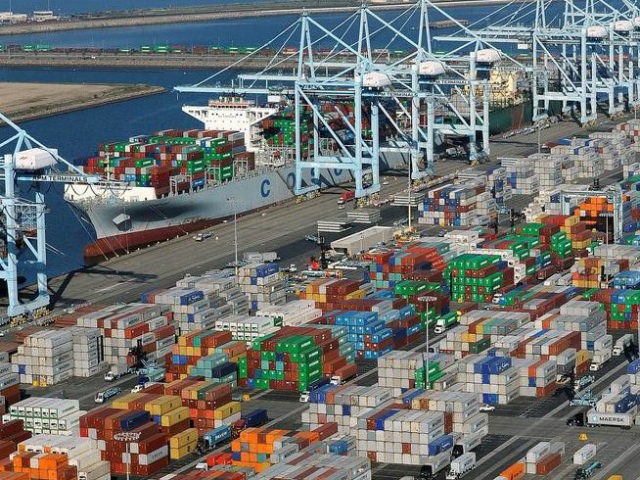The U.S. trade deficit shrank by nearly 10 percent in February, hinting that the economy may be growing at a faster pace than many economists expect.
The deficit fell to a seasonally adjusted $43.6 billion, lower than the $44.6 billion economists surveyed by the Wall Street Journal had expected. Exports rose 0.2 percent to $192.9 billion in February while imports declined 1.8 percent to $236.4 billion, the Department of Commerce said Tuesday.
The Trump administration has made the reduction of the trade deficit one of its central economic goals, describing our persistently large trade deficits as both an economic and security risk. February’s decline makes that goal easier to achieve.
Exports were boosted by improving economic conditions around the globe, as well as a rise in the value of several major currencies against the dollar. A weaker dollar makes American-made goods less expensive for foreign buyers. Exports of goods hit their highest level on record, after adjusting for inflation. Exports of services also rose. Overall, exports are 7.2 percent higher than they were a year ago.
Imports declined as U.S. consumers imported fewer consumer goods such as cell phones and autos from abroad.
A lower trade deficit is a boost to the economy and may raise first-quarter gross domestic product. More importantly, it likely means growth will be even stronger in the spring as manufacturers and service providers kick into higher gear and hire more workers to meet rising global demand.
Trade deficits are not necessarily a sign of a weak economy. In a fast-growing economy, a large trade deficit can develop as rising wealth pulls in more imports. But when the economy is not growing fast, it can be an economic drag. Spending on exports subtracts from demand in the U.S. economy, benefitting foreign workers instead of Americans in need of good jobs. This can have big impacts on areas of the country where manufacturing is particularly important. Research has shown that the deindustrialization of the American Rust Belt is at least partly attributable to trade imbalances with China, for example.

COMMENTS
Please let us know if you're having issues with commenting.